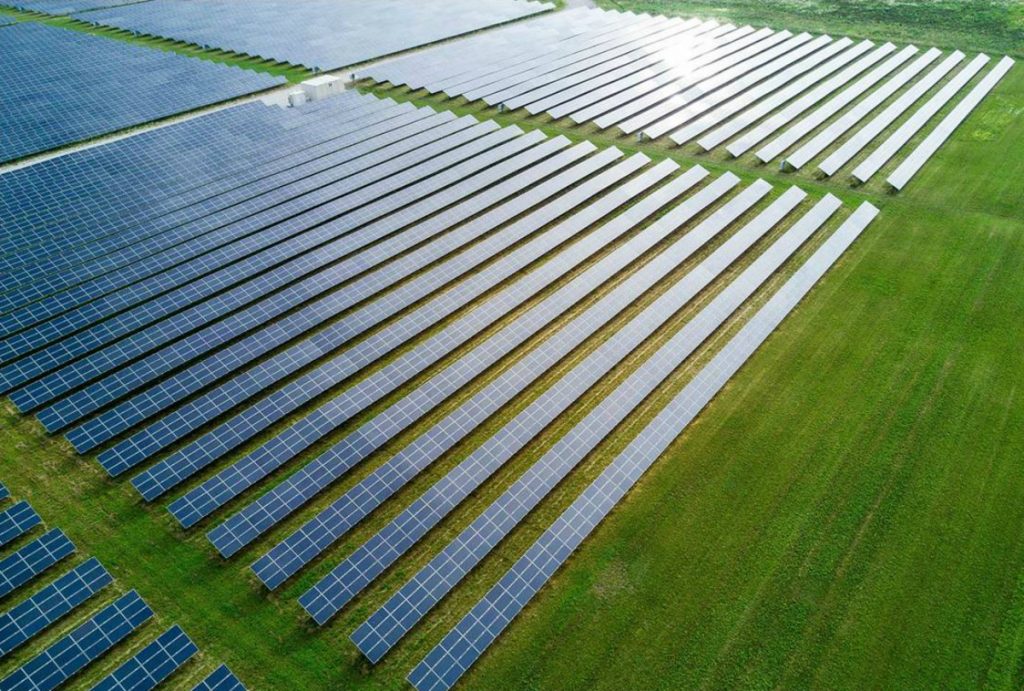
By: Jason Chiu
Solar farms are leading the charge in the global energy industry’s shift towards renewable sources. Their ever-growing importance underscores the need for effective security solutions that can withstand a variety of operational challenges. One such solution that has emerged in recent years is edge processing – a decentralized offering that moves data processing closer to the point of use. This approach, coupled with advanced surveillance systems, opens a new frontier of possibilities in solar farm security and efficiency. Let’s delve into the multifaceted value that edge-based surveillance brings to solar farms and how it could shape the future of renewable energy security.
Understanding Challenges of the Solar Farms Landscape
Solar farms, or solar power plants, are large-scale installations featuring hundreds to thousands of solar panels meticulously arranged to harness sunlight, converting it into clean, renewable energy. With solar farms often located in remote and open areas to maximize sunlight exposure, managing such vast installations is a complicated task. These farms are typically spread over extensive areas, sometimes hundreds of acres, and are packed with high-value equipment. This geographical and operational scenario creates a unique set of challenges, including theft, vandalism, and performance efficiency, which require comprehensive and efficient surveillance solutions.
The Emergence of Edge Computing in Surveillance Systems
In traditional surveillance systems, data collected by cameras and sensors is sent back to a central server or a cloud for processing. While effective to some extent, this model can create latency issues, compromise data privacy, and exert significant pressure on network bandwidth. Edge computing brings a shift to this model. By enabling data processing at the ‘edge’ of the network – closer to the source – edge computing boosts system responsiveness, improves data security, and optimizes bandwidth usage.
Reduced Latency: Immediate Processing, Immediate Action
In conventional, centralized surveillance systems, the time it takes for video data to travel back and forth between the source (camera or sensor) and the central server can result in significant latency. In contrast, edge-based surveillance systems are designed to process data where it’s collected, thereby cutting down the latency drastically. With edge-based analytics, some of the detections and identifications typically requiring operator intervention can be performed automatically, only sending video and metadata once an alarm condition is verified. For solar farms, this means security threats and operational anomalies can be identified accurately and in real-time, enabling swift action and minimizing potential damage or downtime. Given the remote locations of many solar farms, this instant processing and response capability are invaluable.
Enhanced Data Security and Privacy: Less Transmission, Less Risk
As the world becomes increasingly digitized, data privacy and security have emerged as key concerns. Traditional surveillance systems, which involve continuous transmission of data over networks, come with inherent security risks. Edge computing, however, limits the volume of data transmitted, effectively reducing the potential for data breaches. With edge-based surveillance, data is processed locally, and only critical information is sent back to the central system or cloud. This not only enhances the overall security of the surveillance system but also addresses privacy concerns more effectively.
Cost-Efficiency and Bandwidth Conservation: More Processing, Less Transmission
Transferring raw surveillance data from remote solar farms to a central location or cloud for processing can be expensive and can put a significant load on network resources. The cost associated with data transmission can add up quickly, especially considering the large amount of data generated by the multitude of cameras deployed in solar farms. The cost of cellular or satellite services is expensive in comparison to wired network access, which is ubiquitous in urban areas. Judicious use of bandwidth and transmit usable data is a big cost factor. By enabling on-site data processing, edge computing reduces the volume of data to be transmitted, resulting in substantial savings in data transmission costs and considerable conservation of network bandwidth.
Scalability: Expanding Surveillance without Overloading
The scalability of surveillance systems is a significant consideration for solar farms. Given the vast areas they cover, and the numerous cameras required for effective surveillance, scaling a centralized surveillance system can quickly become overwhelming due to the exponential increase in data. Here again, edge-based solutions come to the rescue. Since each device in an edge-based system can process its own data, adding more devices to the network doesn’t overburden the central system, allowing for efficient scaling.
Harnessing the Power of Edge Intelligence
Edge computing serves as a launchpad for implementing artificial intelligence (AI) and machine learning (ML) capabilities in surveillance systems. When coupled with AI and ML, edge computing evolves into edge intelligence – a new level of smart surveillance where data is not just processed locally, but also analysed intelligently in real-time. Edge intelligence can be trained to identify and distinguish unusual activities, such as potential intrusions, from regular patterns, like a flock of birds flying across the panels. It can also detect operational anomalies like a misalignment or malfunction of a panel that might affect the farm’s productivity. Paired with related technologies such as thermal imaging which can greatly enhance contrast (and therefore visibility of threats), these AI-enabled systems help in reducing false alarms, optimizing system performance, and providing a higher level of security.
Case Study: The Power of Edge-Based Surveillance in Solar Farms
To understand the impact of edge-based surveillance, imagine a solar farm equipped with smart cameras powered by edge computing. These cameras, strategically placed across the farm, monitor the site continuously, analysing data in real-time. On detecting any unusual movement, the edge-based AI determines whether it’s a potential intruder or harmless wildlife, thus avoiding unnecessary alerts. Similarly, if a panel is misaligned, dirty or damaged, the system identifies the anomaly instantly, alerting the maintenance team and ensuring minimal downtime. Additionally, edge computing can enable seamless integration with other systems such as access control, further enhancing security and efficiency.
Conclusion: The Promising Future of Edge-Based Surveillance in Solar Farms
The value proposition of edge-based surveillance for solar farms is compelling. By providing real-time insights, robust security measures, cost and bandwidth efficiency, and scalability, these systems can significantly enhance the security and operational efficiency of solar farms. As we continue to rely more heavily on renewable energy, it is crucial to ensure the protection and optimization of assets like solar farms. Edge-based surveillance systems, combining the power of edge computing and AI, provide an efficient, effective, and smart solution that can meet these requirements. As we navigate the challenges and opportunities of this renewable energy era, edge-based surveillance systems stand to play a vital role, shaping a secure, efficient, and sustainable future for solar energy.
Jason Chiu is the professional services group manager with Axis Canada. He has a background in IT and networking and has spent over 15 years in the security industry, from being an integrator, consultant, and manufacturer.

Share This:





